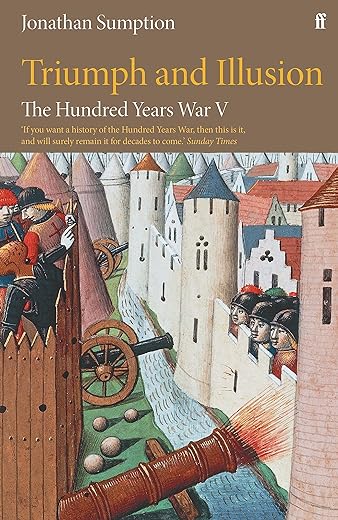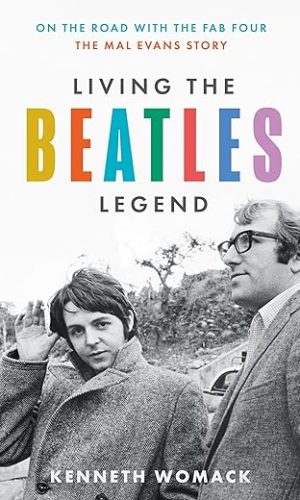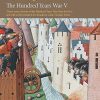The Hundred Years War Vol 5: Triumph and Illusion (Hundred Years War, 5)
£28.90£38.00 (-24%)
The eagerly anticipated final volume in Jonathan Sumption’s prize-winning history of the Hundred Years War, ‘one of the great historical undertakings of our age’ (Dan Jones, Sunday Times).
Triumph and Illusion is the final volume of Jonathan Sumption’s epic history of the Hundred Years War. It tells the story of the collapse of the English dream of conquest, from the opening years of the reign of Henry VI, when the battles of Cravant and Verneuil consolidated their control of most of northern France, to the loss of all of England’s continental dominions except Calais thirty years later.
This sudden reversal of fortune was a seminal event in the history of the two principal nation-states of western Europe. It brought to an end four centuries of the English dynasty’s presence in France, separating two countries whose fates had once been closely intertwined. It created a new sense of national identity in both countries. The legacy of these events would influence their divergent prospects for centuries to come.
Behind the clash of arms stood some of the most remarkable personalities of the age: the Duke of Bedford, the English Regent who ruled much of France from Paris and Rouen; Charles VII of France, underrated in both countries, who patiently rebuilt his kingdom after the disasters of his early years; the captains who populate the pages of Shakespeare – Fastolf, Montagu, Talbot, Dunois and, above all, the extraordinary figure of Joan of Arc, who changed the course of the war in a few weeks at the age of seventeen.
Read more
Additional information
| Publisher | Faber & Faber, Main edition (31 Aug. 2023) |
|---|---|
| Language | English |
| Hardcover | 992 pages |
| ISBN-10 | 0571274579 |
| ISBN-13 | 978-0571274574 |
| Dimensions | 15.6 x 4.78 x 23.39 cm |









by MICHAEL O’ FLANAGAN
I purchased this book for first day delivery and was shocked and disappointed to find perforations at the tops of pages 51 to 82. This appears to be a problem with the printing of the book, yet nobody appears to have checked same before delivery. Having paid Amazon full price for this new book,I would have expected a better service.
by DrSiMo
Summer 2023 has been a significant milestone in medieval history. With the second half of David Carpenter’s biography of Henry III, the Princeton English Monarchs series is now essentially complete for the medieval era. Jonathan Sumption has now just published the final volume in his hundred years war series. And, obviously on a much lesser scale, I have published my first medieval history here on Amazon.
I make no claim of familiarity with the first four Hundred Years War volumes, for me it is how wars end that is more interesting, rather than how they start. The hundred years war began when the Capetian dynasty in France ran out of male heirs. It had begun when the Carolingians, who focused on the threat presented by the Islamic power, that had conquered Spain, were unable to cope with waves of viking raiders. The Capetians were very decentralised, and were replaced by the closely related Valois dynasty, who were immediately challenged by the Plantagenet dynasty of England. Who also had French aristocratic ancestors, and had been the Angevins, from their location of origin in France, then married in to the Normans following the wars between Stephen and Matilda. When the French king conquered the original Angevin territories, they became Plantagenet, still feudal lords of some French lands, for which they were vassals of French monarchs. Plantagenets became Lancastrians when there was a slight discontinuity in the path of succession. Under the Valois, in the face of Plantagenet then Lancastrian challenge, France became more centralised again.
With a subtitle that could have been “Henry VI, the Sane Years”, or even more obscurely, “Henry VI, the Seine Years” the final three decades of the hundred years war are chronicled in considerable detail. In Britain, history is generally regarded as an art, as opposed to America where it is a social science. This volume definitely fits the artistic rendition of a chronology, rather than seeking to analyse the observed phenomena. Perhaps because royal successions are not always straightforward, and possession becomes nine ninths of the law. Henry VI’s grandfather, Henry IV’s succession had not been straightforward. Though by the time of Henry VI’s arrival little was controversial, as recounted here.
The controversy that constitutes the spine of the work, is that the carefully negotiated agreement for Henry V to succeed Charles VI of France, finally realising the claim of Edward III through his mother, that the English king should also be king of France, Henry V also being married to the daughter of a French king, and having proved his prowess through Agincourt and subsequent diplomacy, was completely blown away when he died unexpectedly young. Leaving the infant Henry VI as his heir. His infancy meant there was no prospect of personal rule for the immediate future, and so conflict was rekindled between Henry’s uncles acting as regents, and the surviving son of Charles VI. Proclaimed by some as Charles VII. Though with questionable legitimacy until he was able to be crowned at the traditional site of Rheims. His journey to Rheims was guided by Joan of Arc, who is presented as something like Vera Lynn. Was Vera Lynn actually more important in WW2 than Churchill, you wonder whether someone will write a book about?
Fortunately, Vera Lynn was never in danger of being captured by the Germans. While Joan was captured by the English and their Burgundian French allies. She was though tried under canon law, established by Gratian in the 1140s, systematising the accumulated Papal decrees, and studied subsequently by many, including American and Irish Presidents. It was applied in a distinctly partisan way by clerics closely aligned with the English and Burgundians. Although, seeking to be christian, this did not explicitly mean a death sentence, that is what effectively resulted, when she was handed over to the civil authorities.
Although far from clear it was intended, the disruption of the campaign shrank the fiscal system that paid for the Lancastrian ruled region. Also by this stage it appears that armourers, particularly in Italy, had developed steel able to withstand the English longbows. So although the French had not been able to counter that development directly, it was not so clearly to the English advantage as it had been in the earlier decades of the war, particularly at Crecy, Poitiers and Agincourt. So the English Parliament was called on for funding, and was reluctant. Some in English ruled France began to feel more loyal to the newly crowned Charles, and organised to open fortified settlements to French troops. The English began to insist on English garrisons, though this was more expensive. So it became apparent that unless something else happened, the English position was not sustainable.
Many negotiations were held, but gradually Valois control was established across French territory, last of all taking Bordeaux in 1453, though leaving difficult to attack from the land Calais in English hands for another century.
As the first detailed multi-volume history of the hundred years war, certainly in recent decades, this is obviously a considerable achievement. It forms a solid chronological foundation for more analytical history. Without such a foundation, readers of analytical history of the era would wonder how representative events presented as supporting any analysis were. Particularly given the scale and duration of the conflict. Britain’s institutional development is visible, though not explicitly addressed, in this volume at least. There are suggestions of religious and popular movements acting through a focus on Joan, though understandably documentary evidence of this is unlikely to enable this to be addressed as a factor in conventional history such as this. There is not as much direct reference to sources as in recent early medieval history, though that could be because it resembles more modern history, in the wide range of source documents. Britain today remains an organic somewhat confused mixture of anglican/saxon religion and secularism, while France now is clearly a secular structure with a large catholic population.
The British monarchs claim to reign over France was not formally abandoned until 1801. Did George III see the events around 1789 more about precedent than opportunity? This was unfortunately intertwined with union with Ireland. Perhaps not appreciating, that Ireland was only politically united with England under a king with more French than English subjects, a feudal vassal of the king of France. Following very close links between France and Ireland in the early medieval period. Now Britain is separating from Ireland, significant only to history, not to the present, could become its reputation for horrendous violence and governmental stupidity, alongside technological ingenuity, such as the longbow.
Simon Morley, author of Prelude to America: Security Logic and Maritime Technology in Medieval Europe
by Jon
“It formed the institutions of both England and France in ways which influenced much of their subsequent history” (p775)
The conclusion of this immensely long war (taking 5 Volumes of which this is last) was summarised by the winning side’s king’s councillor thus: “France will be France and England will be England, separate and incompatible countries, in the nature of things too immense to be united in one body” (p809)
Brexit and its continuing struggles, anyone?
With the final word remaining with one of Burgundian heralds during the (failed) peace talks of the Congress of Arras “We must be fools to risk our lives and souls at the whim of lords and princes, they make peace when it pleases them and leave us with the poverty and destruction.” (p449).
by Alun d
I have now read all five volumes of this history. As somebody who prefers my history to be a chronological story, this book is absolutely the best history I have read. The feet of scholarship that has gone into. This is utterly remarkable. The author has done it very much as a labour of a love. he began it in 1979. He has never been a professional historian. He was a full-time barrister for much of the time he was writing this book. His knowledge of mediaeval French, English and Latin must be superb.
I would recommend anyone to read these five volumes. it not only told me the story of the hundred years wall, but tell me the story of France and England. It is a great history book as well as a great story. And his analysis in his final chapter really helped me understand the history of both countries. Totally remarkable! It has been a real privilege to read the five volumes.